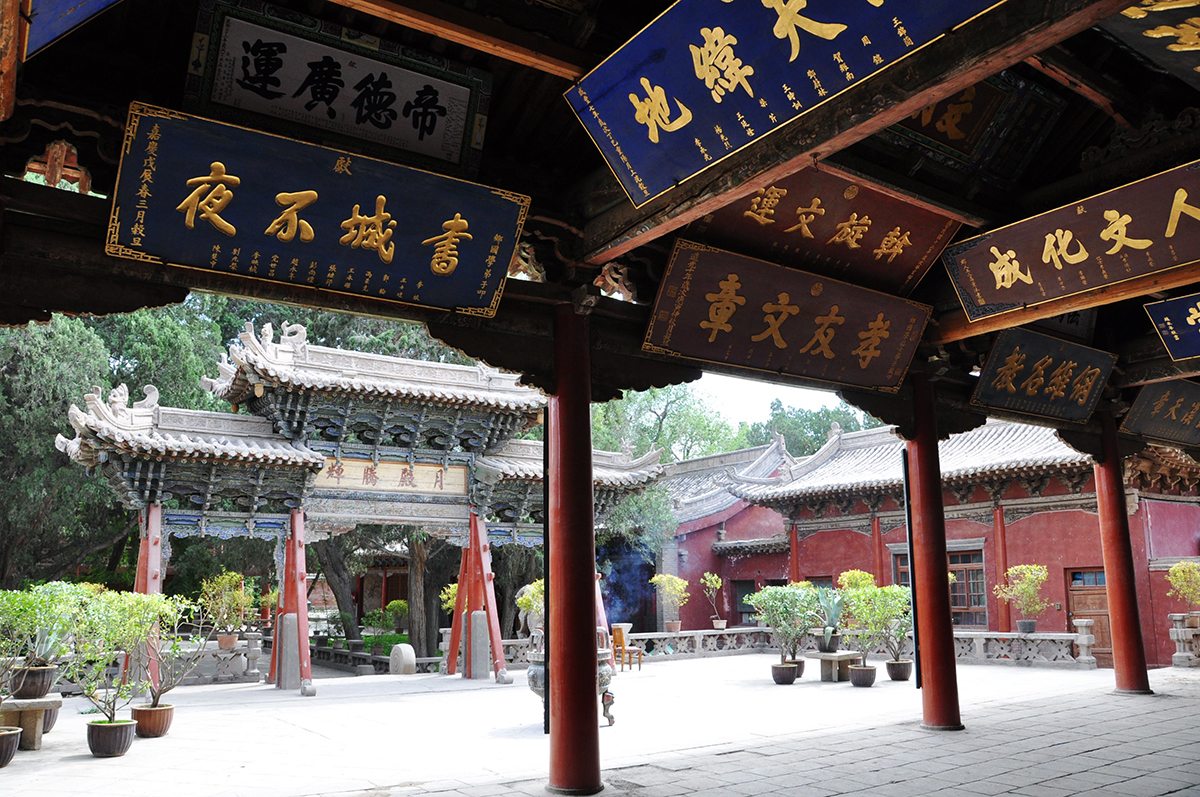
While Confucian temples are common throughout cities in China, the one in the city of Wuwei is considered to be particularly special. Known alternately as the Wuwei Confucian Temple and the Wenmiao Temple, this ancient architectural complex was originally built in 1439, during the Ming Dynasty (1368-1644), and has been extended several times throughout its venerable history. The temple complex itself faces south and is constituted of three main parts: the Wenchang Hall in the east; the Confucius Temple in the middle; and the Liangzhou Confucian Academy in the west.
Covering a surface area of around 1,500 square metres (16,145 sq. ft.), the Wuwei Confucian Temple boasts the reputation of being the largest Confucian school in Gansu province. It historically served as a place for scholars to study and pray to Confucius, and it remains an important site of worship to this day. In particular, it is common for parents to pray for their children at the temple on the run up to examinations. After all, who needs luck when you have the backing of the wisest man in Chinese history!
The Wenchang Hall can be accessed via the “Shanmen” or Mountain Gate and contains a stage for dramatic performances, alongside a plethora of sacred shrines. On the left and right hand sides of the hall, there are shrines dedicated to Master Niu and Master Liu respectively. At the back of the hall, opposite the entrance, sits the Chongsheng Shrine, also known as the Shrine of Worship. The hall’s courtyard is resplendent with lush pine trees and houses a veritable forest of beautifully preserved stone steles, some of which are famous throughout China. In fact, the highly prized Western Xia Tablet was once located within this courtyard, but has since been moved to the Wuwei Museum within the temple complex.
The aptly named Confucius Temple naturally occupies the central position within the temple complex and is the location where offerings can be made in honour of Confucius. This expansive hall also contains memorial tablets dedicated to a handful of Confucius’ most well-known and revered students, including Mencius, Zengzi, Zisi, and Yan Hui. In-keeping with the scholarly theme, the Liangzhou Confucian Academy would have been where literati historically studied and exchanged ideas within the complex, although nowadays it simply acts as another beautiful component of the temple. Alongside these core sections of the temple, there are number of elaborate structures throughout the complex that deserve special mention, such as the Ji Gate, the Lattice Gate, the Bridge of the “Number One Scholar,” and the half-moon shaped Banchi Pool.
The crowning jewel of the temple complex, however, is arguably the Wuwei Museum. As mentioned before, it currently houses the Western Xia Tablet, which contains inscriptions in both Chinese and the extinct language of the mysterious Tangut people. It’s one of the very few remnants left of this enigmatic ethnic group and has been an invaluable tool for linguists in decoding the Tangut language. Alongside this tablet, the museum boasts a staggering collection of over 36,000 cultural artefacts comprised of ancient books, scriptures, works of calligraphy, and paintings. A few other notable items within the museum include: bamboo writing slips dating back to the Han Dynasty (206 BC-220 AD); a bronze cannon from the Western Xia Dynasty (1038–1227); porcelain from the Ming and Qing (1644-1911) dynasties; and remnants of ancient coins, such as Western Xia silver coins.
Explore more about Wuwei on our travel:
Explore the Silk Road in China – Exclusive Itinerary for December 2020